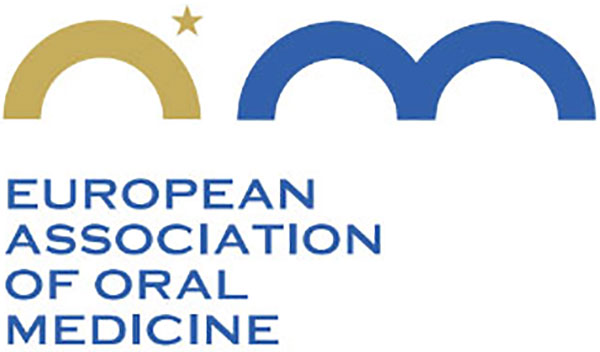Hpv Infection And Related Oral Diseases
Definition
Human Papillomaviruses (HPVs) are a group of DNA viruses, which have a remarkable target cell specificity: they have been reported principally in anogenital tract, urethra, skin, larynx, tracheobronchial mucosa and oral cavity. More than 100 different types of HPV have been classified and they are divided into high (e.g. 16,18, 31) and low oncogenic risk genotypes (e.g. 11, 42, 36), depending on the association with malignant change. The viral products stimulate cell growth in the basal layer leading to formation of a common wart. Since the recognition of high risk HPVs in oral carcinomas, the malignant potential of HPV infection has been suggested. A recent metanalysis, including 94 studies about HPV presence in oral mucosa (range 0-100%) showed that oral dysplasia and oral squamous carcinoma are more commonly associated with HPV infection (type 16 and 18) compared with normal oral mucosa.
Epidemiology
As regards healthy oral mucosa, the prevalence of HPV has been reported to vary greatly, ranging from 0% to 81.1%; recent datum is 0.6% for Japan and 5.5 % for Italy.
Clinical presentation
HPV can be found in oral lesions of different clinical appearances and significance, ranging from benign warts to malignant neoplasms. Immune status and genetic profile of the host as well as the type of virus, may play a role in determining the clinical outcome of HPV infection.
The most common among these entities is a benign, focal, exophytic lesion usually designated with the general term of oral papilloma, although many terms can be used to indicate the clinical variants of such lesion; among them being oral verruca vulgaris, oral condyloma acuminatum, oral focal epithelial hyperplasia. It has been suggested that the clinical presentation of oral papillomas depends from the type of HPV that is present in the lesion, although no definitive evidence is available in this regard. Generally oral papillomas are asymptomatic, unless they are traumatized and interfere with mastication.
HPV has been detected in several other oral lesions, including malignant and premalignant lesions such as squamous cell carcinoma, leukoplakia (especially in the proliferative verrucous entity - PVL) and lichen planus. HPV-DNA from different types can be found also in clinical healthy oral mucosa, where is usually present in its latent form (episome).
Etiopathogenesis
HPVs are epitheliotropic and host-specific, with infection across the species being exceedingly uncommon. Historically, it has been postulated that HPV infection begins with the inoculation of virus into interruption of epithelium and the interaction with a putative specific cellular receptor. It is recognized that HPV, following trauma of epithelium, establishes a non-productive infection of basal layer cells in the skin and mucosa, but it is only in differentiated epithelia that HPV replicates. The early viral gene products stimulate cell growth in the basal layer, leading to epithelial proliferation and formation of an exophytic lesion, consisting of thickened layers of epithelial tissue that may show acanthosis or hyperkeratosis, in presence of an intact basement membrane. In vitro studies have suggested that HPV may act as an initiator of epithelial proliferation or play a role in the early stage of oral carcinogenesis through mechanisms involving E5, E6, and E7 oncoproteins which can degrade oncosuppressor gene products p53 and pRb.
Route of transmission
HPVs can be sexually transmitted (via multiple sexual partners, unknown partners, orogenital contact), although alternative routes have been demonstrated, among them vertical (perinatal) or horizontal transmission (HPV-contaminated fomites and clothing). Autoinoculation of the virus is common.
The incubation period for HPV ranges from 1-6 months; however, latency periods of up 3 years or more are suspected.
Diagnosis
The diagnosis of HPV-associated oral lesions is essentially clinical, but histological confirmation is normally recommended. Although identification of specific HPV type has no clinical relevance at present, exfoliated cells can be easily collected by brushing procedure and HPV-DNA amplified by nested PCR assay.
A variety of molecular methods exist for detection and quantification of HPV but there are essentially three techniques using nucleic acid probes (Direct Probe Methods, Signal Amplification, Target Amplification).
Treatment
The first line treatment for oral papilloma is surgical excision with scalpel, although alternative approaches include cryosurgery with liquid nitrogen, or electro-cauterization. There is currently no virus-specific drug therapy available for HPV infection. Local medical treatments include topical application of trichloroacetic acid, podophyllum, cidofovir, imiquimod, and intralesional injection of antiviral agents. Among systemic therapies, ribavirin, retinoids, folic acid, interferon and others have been evaluated without significant success.
A follow-up examination should be done by the health care provider every few weeks after initial treatment, then self examination can be promoted in order to detect reccurrences. Current treatments of HPV-associated lesions may reduce, but unfortunately, do not eliminate their infectivity.
Treatment can be difficult, with frequent failures and recurrences, even if some lesions may resolve spontaneously.



Further reading
1 Praetorius F. HPV-associated diseases of oral mucosa. Clin Dermatol 1997; 15:399-413.
2 Miller CS, Johnstone BM. Human papillomavirus as a risk factor for oral squamous cell carcinoma: a meta-analysis, 1982–1997. Oral Surg Oral Med Oral Pathol Oral Radiol Endod 2001; 91:622-35.
3 Giovannelli L, Campisi G, Lama A, Giambalvo O, Osborn J, Margiotta V, et al. Human papillomavirus DNA in oral mucosal lesions. J Infect Dis 2002; 185: 33- 6.
4 Ostwald C, Rutsatz K, Schweder J, Schimdt W, Gundlach, Barten M et al. Human papillomavirus 6/11, 16 and 18 in oral carcinomas and benign lesions. Med Microbiol Immunol 2003; 192:145-8.
5 Kurose K, Terai M, Soedarsono N, Rabello D, Nakajima Y, Burk RD, Takagi M. Low prevalence of HPV infection and its natural history in normal oral mucosa among volunteers on Miyako Island, Japan. Oral Surg Oral Med Oral Pathol Oral Radiol Endod 2004; 98:91-6.
6 Campisi G, Giovannelli L, Ammatuna P, Capra G, Colella G, Di Liberto C, Gandolfo S, Pentenero M, et al. Proliferative verrucous vs conventional leukoplakia: no significantly increased risk of HPV infection. Oral Oncol 2004; in press.

